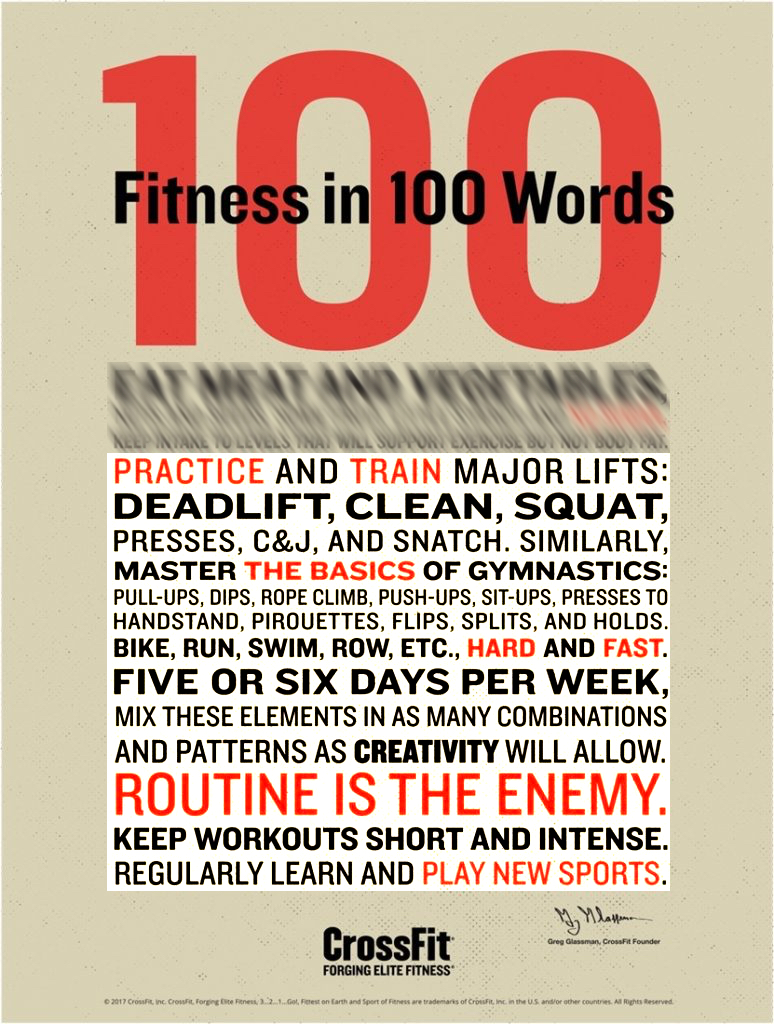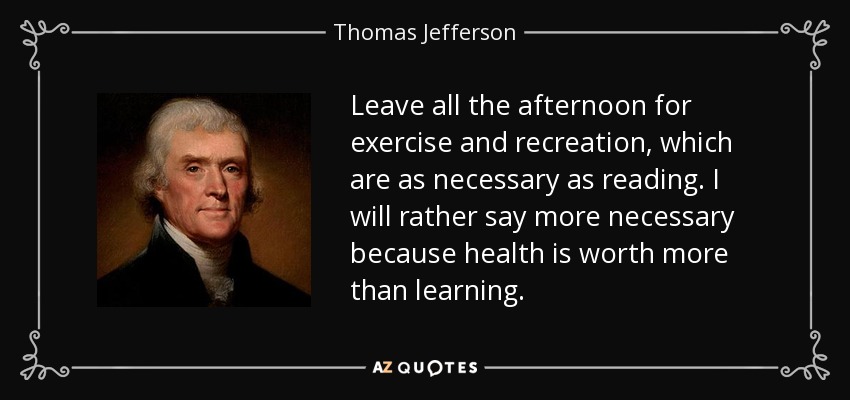The second part of our “Fitness in 100 Words” breakdown is the exercise portion. While nutrition should be priority #1 when it comes to health, physical activity is a close second if not a tie.
The term “Functional Fitness” has become a bit of a buzz word these days. You see it in marketing language alongside things like High Intensity, Performance Based and Interval Training. What functional fitness really means is how well what you do in the gym prepares you for every day life. That means learning, implementing and improving movement patterns we all use on a regular basis.
Anyone who has taken On Ramp with me has an idea of what I’m talking about. I try to explain why it’s important to practice the deadlift, squat, press and all other movements we utilize in class. We pick things up off the ground, sit in chairs and put things on shelves almost every single day. Doing it correctly will prevent injury and ensure independence as we age.

Part 2: EXERCISE
Some of the words in the poster above are red to stress their importance in CrossFit methodology. Many of us lose sight of these things as we start to get better at our workouts and set new, more challenging goals.
“PRACTICE and TRAIN”
Each time we participate in a class at CrossFit Spur we are training our bodies through practice, not through tests. Often times the strength portion of our class is based on a percentage to make sure we’re maximizing progress with appropriate practice.
When we skip this prescribed practice we’re no longer training our bodies appropriately. The programming is designed with purpose, so make sure you follow it even if you really want a new PR.
“THE BASICS”
A heavy deadlift if useless (and dangerous) if your unweighted hip hinge is incorrect.
A handstand walk will never be achieved if you can’t perform a freestanding hold.
A kipping pull up will never be efficient or safe unless you can first do one strict.
The basics may not be as cool as more complex movements, but they are the foundation upon which all complex movements are built.
Without first building and maintaining a solid foundation of movement patterns and strength we greatly increase our risk of injury.
“HARD and FAST”
Always stick with the coaches recommendation.
Making a workout appropriate for YOUR ability level is key. Hard, fast, heavy, intense… these are all relative to your ability.
A heavier or more complex option does not necessarily make a “better” workout. In fact, it usually does the opposite.
Choosing a workout variation beyond your ability will not give you the desired outcome of the workout. Choosing the “easier” option will result in a MUCH better workout and in turn speed up your progress.
If you choose the heavier weight and only get 1 round when the average is 4, you just missed out on 3 rounds of practice.
If you choose the longer distance and take twice as long, your intensity is not as high as it could be.
“ROUTINE IS THE ENEMY”
Mix. It. Up.
Even if you don’t like it. Skipping the days or exercises you don’t like won’t result in progress. It’s easy to say “I like box step ups instead of jumping so I’ll just do that again”.
Your programming is varied for a reason, so stick with it. Routines tend to make us complacent in daily life as well as exercise. Variation is uncomfortable and may not always be as fun, but it’s how we improve.
All progress lies just outside our comfort zone.
“PLAY NEW SPORTS”
Whats the point in being fit if you don’t use it?
CrossFit develops your ability to adapt and overcome adversity when learning new things. So why not apply what we do in class to other things in life?
Don’t be afraid to jump into a basketball game at the family party, join a kickball league with your coworkers or learn how to ski this winter.

